I love this city! Even in drizzly and cold November, everything about it appeals. Aesthetically, both olden traditions and the latest design trends, are everywhere to enjoy. I was amazed that, within the city centre, every nook and cranny was occupied by some delightful boutique (how do they support themselves with a store entirely devoted to rings, for example?), stylish museum, charming “brown café” (pub) or hip & cool restaurant. No boarded up storefronts: colourful window displays set off nicely by the muted Amsterdam palette. Speaking of the colour scheme up in the Northern latitudes, and since this was the month of November, when all of our hemisphere reduces its palette, I was really taken by the subdued harmonies all over town. It was as if some metteur en scène had specified that the entire city should stick to his austere scheme: black, or a variety of almost-blacks, ivory or white, brick red (and an occasional scarlet), gold and silver.
left row: door in the old Beguine (lay sisterhood) gated community • custom chandelier at the Tassen Museum (Tassen=handbag) • herring at the market • a “brown” café • vestments at the secret Catholic attic church “Ons’ Lieve Heer op Solder” • night looking south along the appropriately-named Geldersekade • right row: ginger cat at a fancy home in the canal district • the clock at Central Station (not Grand Central, Maureen) • Classic canal home façade • 17th century mother of pearl inlay for an Amsterdam big shot • houses along the Amstel And the light! Maybe Vincent felt he had to go to the South of France to get inspired by the dazzle of sunlight, but it is the low light of winter up North that turns me on. The burnish of a sunny day is equaled by the silver of the drizzly ones. And, as in foggy San Francisco, the atmospherics are a constant pleasure.
Top left: out the attic window at the “Ons’ Lieve Heer op Solder” • swan on the River Amstel • more façades—with in-and-out cloud shadows • along Prisengracht looking south • early sunset looking south towards Amsterdam from the Amsterdam Noord district • The Beguine I visited Amsterdam with my dear and old friend (we used to work together at Vogue) Maureen. Through Owners Direct, we found a convenient apartment in the old part of town (near NeuMarkt). Other than the very steep 4 sets of stairs that led to it, it worked out fine, and not too expensive. Every day we roughed out a schedule that would keep up in the same neighborhood for the day. We did take advantage of the I amsterdam card, which gave us free or reduced entrance fees to the museums, along with free transportation for 3 days.
Naturally, we first headed for the Rijksmuseum, which had just reopened after 10 years of renovations. I imagine that period as having given lots of artisans the opportunity to participate, what with all the construction, interior design, handpainted ceilings and myriad restoration projects. The nearby Van Gogh Museum presented the artist’s oeuvre from beginning to end, with lots of commentary, so visitors can better appreciate his very hard work, and evolution of technique and style. But my favorite art experience was at a smaller show held in the basement annex to the Amsterdam Museum: Mondrian and Amsterdam. This was before Boogie Woogie, when the painter used traditional technique to create haunting landscapes.
We mixed history and whimsy with our core Art pilgrimage. Even if one is not a history buff (tho I am), it’s hard not to wonder about the city planning that created Amsterdam. Handily enough, there’s the Het Grachtenhuis Canal Museum (Gracht=Canal). I thought the exhibits would explain how Amsterdam has tamed the Sea and Rivers which inundate it (Amsterdam= River Amstel—as in beer— + dam) with windmills and such, but the museum is actually only devoted to the brilliant and practical city fathers, who in 1613 (just about the time the Dutch set up what was to become, in 1665, New York City) commenced executing a forward-thinking plan for expansion of the then-overcrowded city. The exhibits were very entertaining and informative. Unlike the French, who fall in love with theory, the Dutch are a practical people: Practicality trumps all. As long as you don’t break any laws, you can do what you want. Over and over, we saw evidence of this, in their history, and current policies. They were the first Europeans to accept gay marriage, and the regulated drugs and prostitution (no pimps allowed: these women are their own bosses) are evidence. Despite the charm and beauty of the old Amsterdam houses, this practical streak is evident:
Top: Not only does a forward tilting façade counter act the diminishing effects of perspective, but it allows heavy stuff to be hoisted to the upper floors without scraping off all that pretty brickwork. In the second photo you can see one of these hooks, which continue to be the preferred means of moving furniture in and out. Second row: Before they had street numbers, these ceramic plaques identified what went on inside the building thus decorated. I get the baker plaque; just not sure what activity the fox with a crab represents. To the right of the baker is what the practical Dutch have devised to prevent beer-laden males from peeing against buildings: a simple triangular sheet of metal positioned so that anyone urinating in this corner will find the stream redirected towards his shoes.
Getting around town, ostensibly so easy, was a bit of a challenge for us. I think it’s because Amsterdam faces North to the sea. I grew up on the East Coast, which has the ocean to the right, and spent 22 years on the Left Coast. Beaches along the French Mediterranean face South or West, but never had I looked North to a body of water (Long Island Sound doesn’t count). I was constantly spinning around the guide map to orient myself. It didn’t help that the routes for our main tramway lines were all askew because of construction. After 3 days, I got it down though.
The locals get around by bike. Everyone. And no one wears a helmet. As a pedestrian, I got the feeling that I should be the one wearing a helmet, since because parked bicycles take up all the designated sidewalk space, one has a choice between walking in the street or in the ubiquitous bike lanes. I recommend choosing the street since there are far fewer cars than bikes. Amsterdam is a young city—I saw only a handful of folks older than 35. And this is no wonder because the houses are so narrow, and apartments small, that having children older than 2 creates a space problem. Way back when, Amsterdammers were taxed based on the width of their house. Hence the verticality of space allocation.
One great benefit of traveling off season was that we were able to experience the friendliness of many locals, who aren’t put upon by the summer hoards. On my last morning, I found my way back to Gallerie Mokem (the oldest gallery in town), where I had glimpsed an intriguing exhibit of animal paintings by the artist Pieter Pander. It was hours before opening time but Anne, who was in charge at the time, kindly opened the door, permitting me to examine the paintings close up. She told me about the painter and talked knowledgeably about the gallery art. I don’t think I would have experienced that generosity of spirit in a comparable New York or Paris gallery.
Another bit of Amsterdam kindness was exhibited at the Café Van Puffelen, over in the chic Jordaan area. We enjoyed great hearty sandwiches every day for lunch, and this day I ordered smoked fish, which was garnished with fresh and delicately pickled cucumbers. For years I had been trying to track down a recipe for this sweet and crispy condiment and, nothing to lose, asked the server if she could convey how is prepared. No problem! Why not just go to the kitchen and ask the chef yourself! And so I did. Here’s jolly Tomas:
and here’s me, enjoying what is currently my favorite city ever.
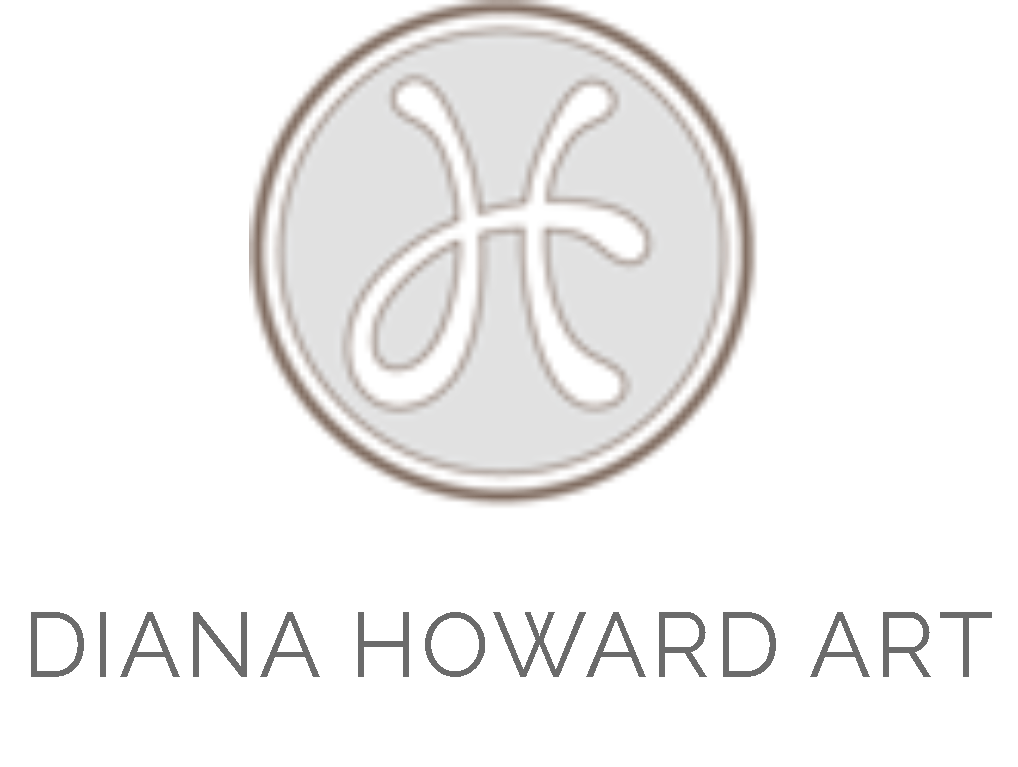

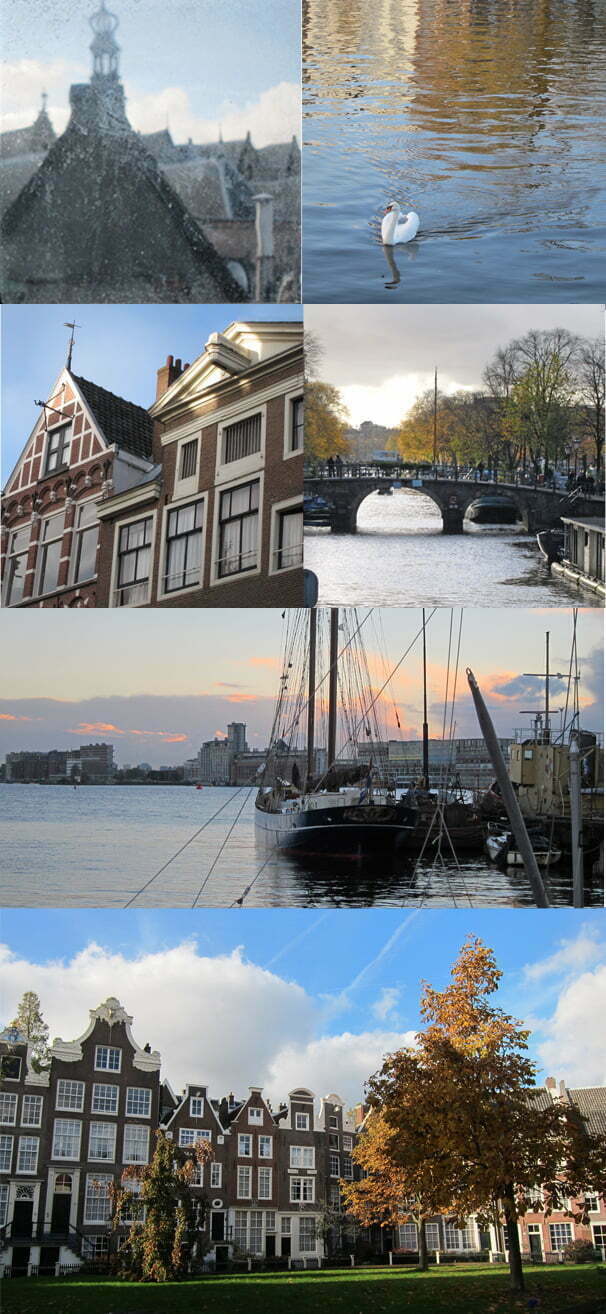
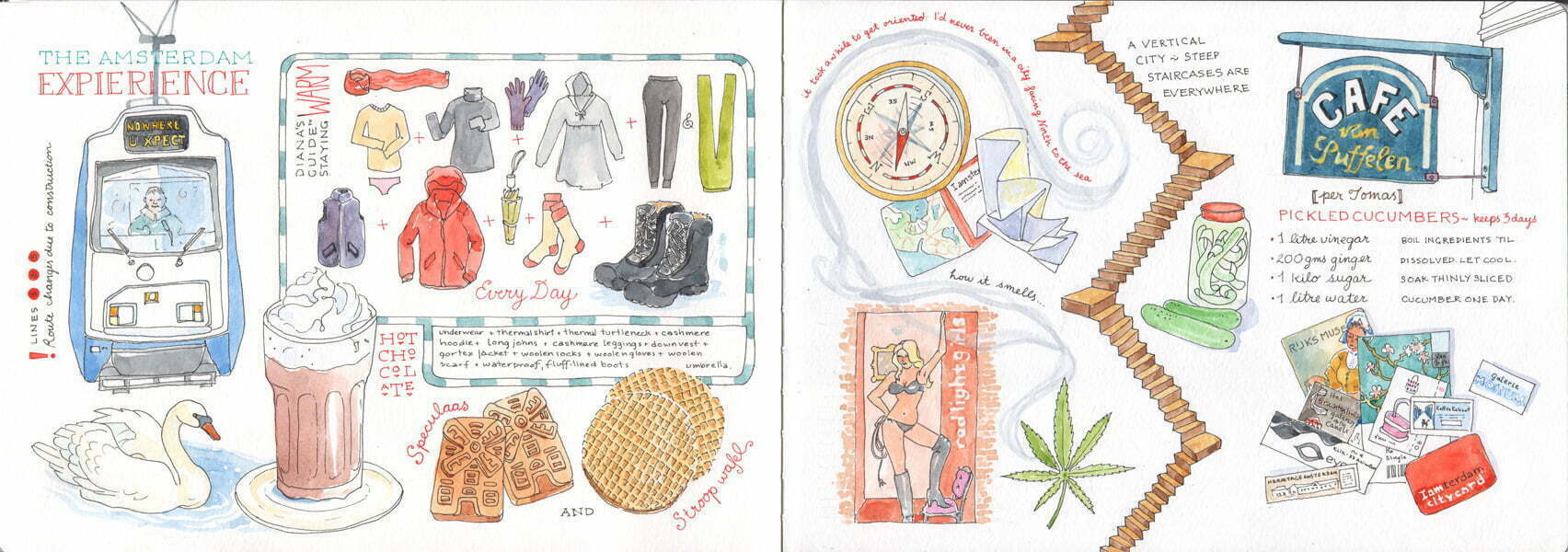

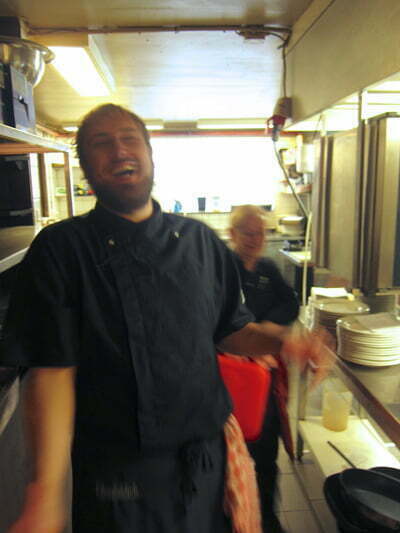
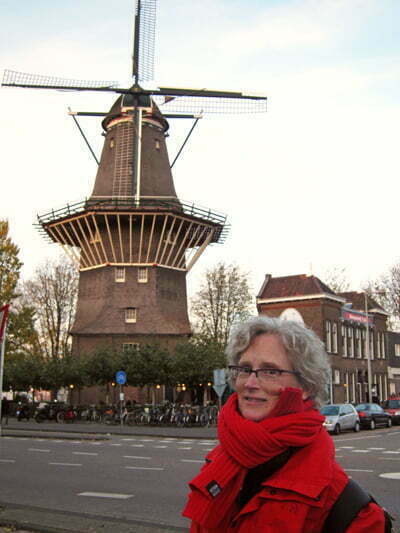
What a wonderful overview of our trip! It’s transporting! Thanks for putting this together and sharing your experience.
Thanks! Loved seeing the pix with the explanations/descriptions!
This blog is transporting. Thank you for sharing the visuals, the history, the culture, and a bit of yourself. So, how do you make the pickled cucumbers?
Pickled cucumbers: 1 kilo sugar, 1 litre water, 1 litre white vinegar, 200 gms ginger. Boil these and cool. Add thinly sliced cucumbers. Leave in for 24 hours. They’ll be good for about 3 days. You can use the leftover liquid for more.